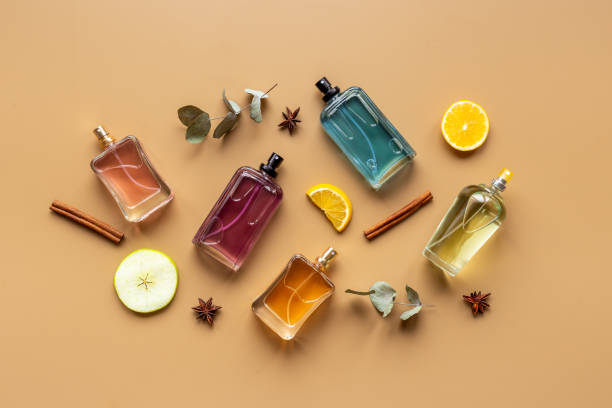The Evolution of Parfû: From Ancient Aromas to Modern Scents

Perfume, or “parfû,” has been a beloved part of human culture for thousands of years. From the earliest civilizations to modern times, the use of scents has evolved significantly. This journey from ancient aromas to modern perfumes reflects a blend of art, science, and a deep-seated desire to capture nature’s most delightful fragrances.
Ancient Civilizations: The Birth of Perfume
The story of perfume begins in ancient civilizations. The Egyptians were among the first to use fragrances in their daily lives. They believed that scents were a divine gift, and they used perfumes in religious ceremonies, for personal grooming, and even in burial rituals. “Kyphi,” a famous Egyptian perfume, was made from ingredients like myrrh, frankincense, flowers, honey, and wine. This blend was used as incense or as a soothing balm.
The Greeks and Romans continued the tradition of perfume-making, using ingredients such as flowers, herbs, and spices. They imported many of these ingredients from far-off places like India and Persia. Perfumes were often mixed with oils or wine and used in bathing, religious rituals, and social gatherings. The Greeks also differentiated between perfumes for men and women, while the Romans were known for perfuming their public bathhouses, enhancing the luxury and hygiene of the time.
The Islamic Golden Age: Perfume Flourishes in the East
During the Middle Ages, perfume-making saw significant advancements in the Islamic world. As Europe faced a decline in cultural and scientific developments, the Middle East became the hub of perfume innovation. The Arabs and Persians perfected the art of distillation, which allowed for more efficient extraction of essential oils from flowers, herbs, and woods. This led to the creation of “attar,” a concentrated perfume oil still popular in the Middle East.
Read Also: 3isen no Love1ock
Avicenna, a renowned Persian physician, discovered the process of distilling rose petals to produce rosewater, a significant breakthrough in the history of parfû. These innovations laid the groundwork for modern perfume-making. The Islamic world became the center of the perfume trade, exporting exotic spices, resins, and aromatic substances to Europe via the Silk Road.
The Renaissance: Perfume Returns to Europe
The Renaissance marked the reintroduction of perfume to Europe, primarily due to the Crusades and renewed trade between East and West. In Italy, especially in Venice, perfumers began experimenting with new formulas, blending scents to create unique perfumes. Catherine de’ Medici, an Italian noblewoman who became the Queen of France, is credited with popularizing perfume in the French court. She brought her personal perfumer, René le Florentin, to Paris, making the city the perfume capital of the world.
The 18th Century: The Rise of Grasse and Modern Perfumery
The 18th century saw the town of Grasse in southern France emerge as the epicenter of the perfume industry. Originally known for leather tanning, Grasse transitioned to perfume production to cover the unpleasant odors of tanned hides. The region’s climate was ideal for growing aromatic plants like jasmine, lavender, and roses, which became central ingredients in many perfumes.
During the Age of Enlightenment, scientific advancements revolutionized perfume-making. Chemists began isolating and replicating natural scents, leading to the development of synthetic fragrances. These innovations expanded the range of available perfumes, made them more affordable, and increased their longevity. Perfume houses like Jean-Marie Farina created fresh, invigorating scents, such as Eau de Cologne, which became widely popular.
The 19th Century: Industrialization and the Birth of Modern Perfumery
The 19th century brought about the birth of modern perfumery, thanks to the Industrial Revolution. New technologies in chemistry allowed perfumers to create synthetic versions of rare and expensive natural scents. The discovery of synthetic aldehydes expanded the range of fragrances available to perfumers, allowing for more creativity and innovation in perfume composition.
Read Also: Brady Sucks Vercel
This era also saw the rise of major perfume houses like Guerlain, established in 1828, and Coty, founded in 1904. These companies began mass-producing perfumes, making them accessible to a broader audience. Perfume bottles also became more artistic, with designers like René Lalique creating elaborate glass designs, elevating perfume packaging to an art form.
The 20th Century: The Golden Age of Perfume
The 20th century is often referred to as the golden age of perfume. With the introduction of synthetic ingredients, perfumers had more freedom to experiment and create complex scents. One of the most iconic perfumes, Chanel No. 5, launched in 1921 by Coco Chanel, changed the industry with its use of aldehydes. This new ingredient added a fresh, airy quality to the scent, setting it apart from traditional perfumes.
Perfume became a crucial part of fashion and culture, with designers like Christian Dior, Yves Saint Laurent, and Estée Lauder launching their own signature scents. Marketing and branding took center stage, with elaborate advertising campaigns and celebrity endorsements making perfume a symbol of luxury and status.
The 21st Century: Sustainability and Personalization in Perfume
In the 21st century, the world of parfû continues to evolve. One of the biggest trends today is sustainability. As consumers become more aware of environmental issues, many perfume brands focus on ethically sourced ingredients, eco-friendly packaging, and transparent supply chains. Niche perfume brands are gaining popularity for their dedication to natural ingredients, artisanal craftsmanship, and personalized experiences.
Technology is also transforming the perfume industry. Augmented reality, virtual scent sampling, and AI-driven fragrance personalization are making it easier for consumers to find their perfect scent. Additionally, the traditional notion of gender-specific perfumes is fading, with more brands offering unisex or gender-neutral fragrances that appeal to a wider audience.
Conclusion: The Ever-Evolving Art of Parfû
From ancient times to the modern day, the evolution of parfû reflects the changing tastes, cultures, and technologies of human society. Perfume has always been more than just a fragrance; it is a symbol of creativity, luxury, and personal expression. As we look to the future, the world of perfume will continue to innovate, inspire, and captivate, blending tradition with new trends and technologies.



